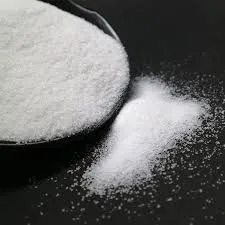L-Ornithine Aspartate in Liver Disease A Therapeutic Perspective
Liver disease remains one of the leading causes of morbidity and mortality globally, affecting millions of individuals across various demographics. Among the array of therapeutic strategies being explored, L-Ornithine Aspartate (LOA) has garnered attention as a potential agent for managing hepatic disorders due to its unique metabolic properties. This article aims to delve into the significance of LOA in the context of liver disease, examining its mechanisms of action, clinical applications, and implications for future therapeutic strategies.
L-Ornithine Aspartate in Liver Disease A Therapeutic Perspective
L-Ornithine Aspartate is a dipeptide composed of the amino acids ornithine and aspartate. Its primary action within the body is to facilitate the removal of excess ammonia through the urea cycle. LOA primarily acts by promoting the conversion of ammonia to urea, which is far less toxic and can be excreted from the body. The involvement of ornithine in the urea cycle makes LOA particularly effective in mitigating hyperammonemia. Additionally, aspartate contributes to enhancing the activity of transaminases, which can further facilitate amino acid metabolism and energy production in hepatocytes.
l ornithine aspartate in liver disease

Several clinical studies underscore the potential benefits of LOA in patients with liver disease. One of the most notable applications has been in the treatment of hepatic encephalopathy. Clinical trials have indicated that administering LOA leads to a significant reduction in ammonia levels and an improvement in neurological scores among affected individuals. Patients treated with LOA have displayed fewer episodes of hepatic encephalopathy, suggesting that LOA not only alleviates symptoms but may also contribute to long-term management strategies for liver dysfunction.
In addition to hepatic encephalopathy, LOA has shown promise in various types of liver diseases, including cirrhosis and acute liver failure. In cases of cirrhosis, the impaired liver function often leads to further metabolic derangements, which LOA may help stabilize. Studies have illustrated that the use of LOA in cirrhotic patients can improve overall liver function tests and promote better nutritional status, thereby enhancing quality of life. Furthermore, in acute liver failure models, LOA administration has been associated with improved survival rates, highlighting its potential as a life-saving intervention in critical situations.
Despite the encouraging findings, the use of LOA is not without limitations. The efficacy of LOA can vary based on the underlying cause and stage of liver disease, as well as individual patient factors such as age and overall health. Furthermore, while LOA can provide symptomatic relief and some degree of metabolic correction, it is not a cure for underlying liver disease. Thus, it should be viewed as part of a comprehensive treatment approach that may include lifestyle modifications, pharmacotherapy, and, when necessary, surgical interventions.
In conclusion, L-Ornithine Aspartate represents a promising therapeutic avenue in the management of liver disease, particularly in addressing complications associated with hyperammonemia and hepatic encephalopathy. Its mechanisms of action, centered around urea formation and nitrogen metabolism, make it a valuable adjunctive treatment option in various hepatic disorders. Ongoing research and clinical trials will further delineate the specific roles and efficacy of LOA, paving the way for more refined therapies aimed at improving outcomes for patients suffering from liver disease. As the medical community continues to explore innovative solutions to combat liver ailments, LOA stands out as a noteworthy candidate that bridges the gap between basic biochemistry and clinical application, ultimately contributing to better patient care and improved quality of life for those afflicted by these challenging conditions.

